The San Francisco Opera is now back in full swing, starting last month when they staged TOSCA, the first opera in the War Memorial Opera House since the pandemic shutdown (be sure to read our review). In October, we were able to catch Ludwig van Beethoven’s only opera, Fidelio, which is as powerful and awe-inspiring today as it was when it was written over 200 years ago—the craft of a musical genius. It is running through this Saturday, October 30.
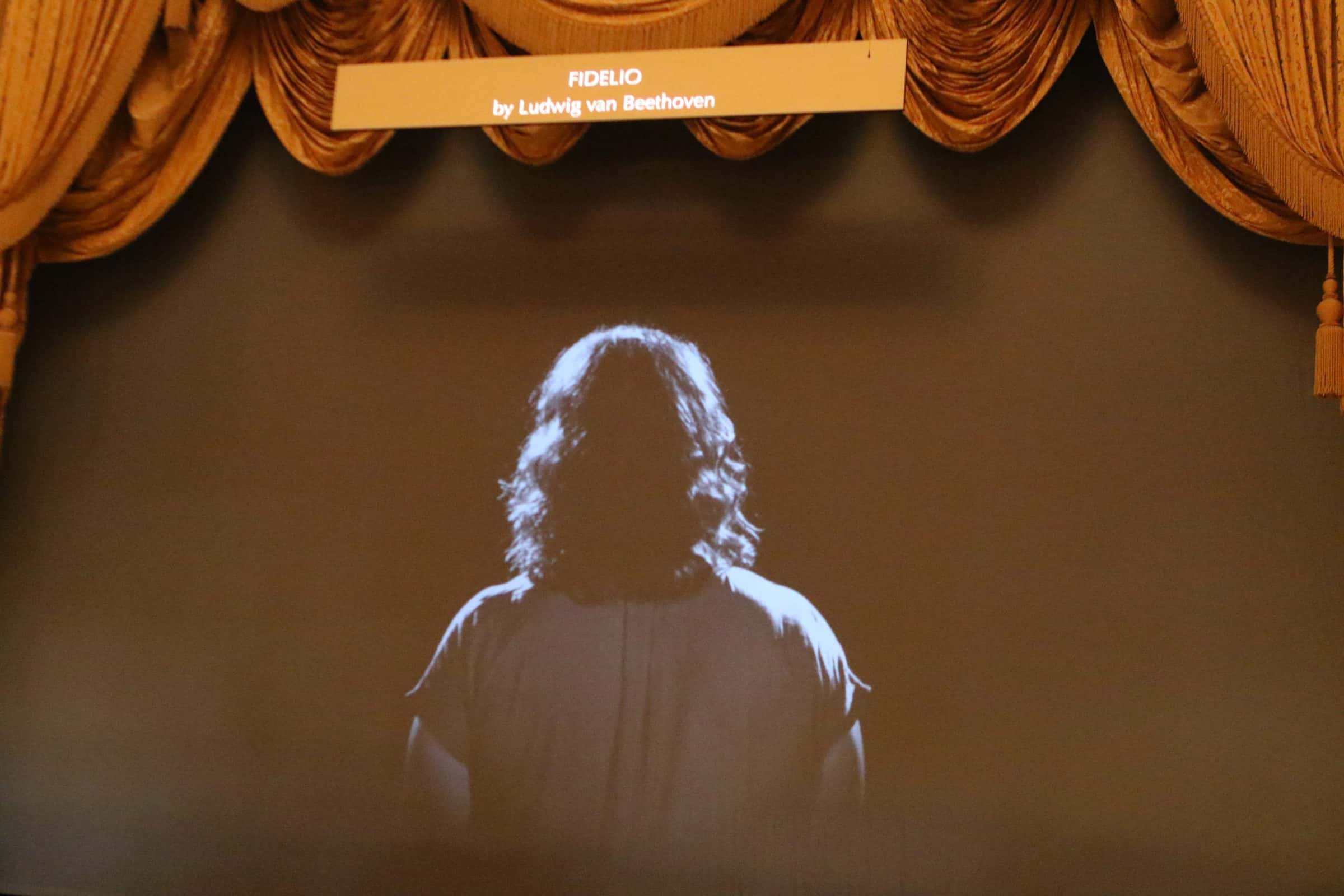
Fidelio is a riveting masterpiece, combining political tyranny and that eternal, unquenchable promise of hope that so often keeps people on the edge of their seats in opera houses around the world. A pivotal character is Leonore, a woman who disguises herself as a man, Fidelio, in the desperate attempt to find—and then free—her husband Florestan (below) who is in prison for his political beliefs.
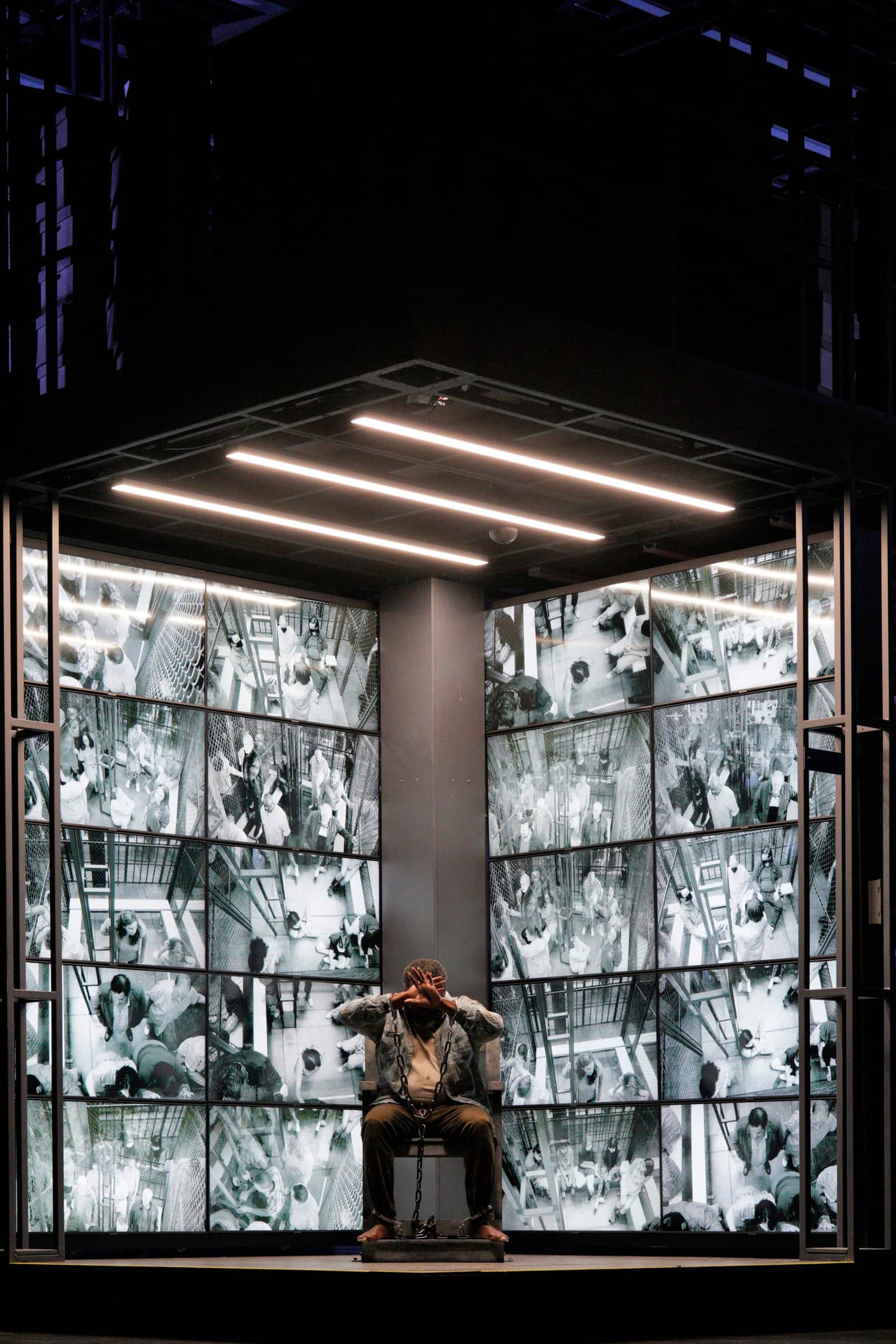
Russell Thomas as Florestan in Beethoven’s “Fidelio.” Photo: Cory Weaver/San Francisco Opera
Leonore gets a job as assistant to the jailer Rocco at a prison overseen by her husband’s enemy, Don Pizarro. As his lover and partner, she exudes the passion that we so often see in traditional operas but when set to Beethoven’s music, scene after scene is elevated to another level.
The power of Act I’s Prisoners Chorus gives you goose bumps. As you reflect on that time in history, you realize that humanity has come a long way over the past two hundred years and has certainly surpassed oppression in many parts of the world. And yet, we have also recently been reminded about the fragility of democracy and freedom itself, and not just in the United States. The prison setting itself is also dramatic as a backdrop for the voltage of the voices echoing everyone’s longing to forever be free.

Above, and below The San Francisco Opera Chorus performs the Prisoners’ Chorus in Beethoven’s “Fidelio.” Photo credit: Cory Weaver/San Francisco Opera
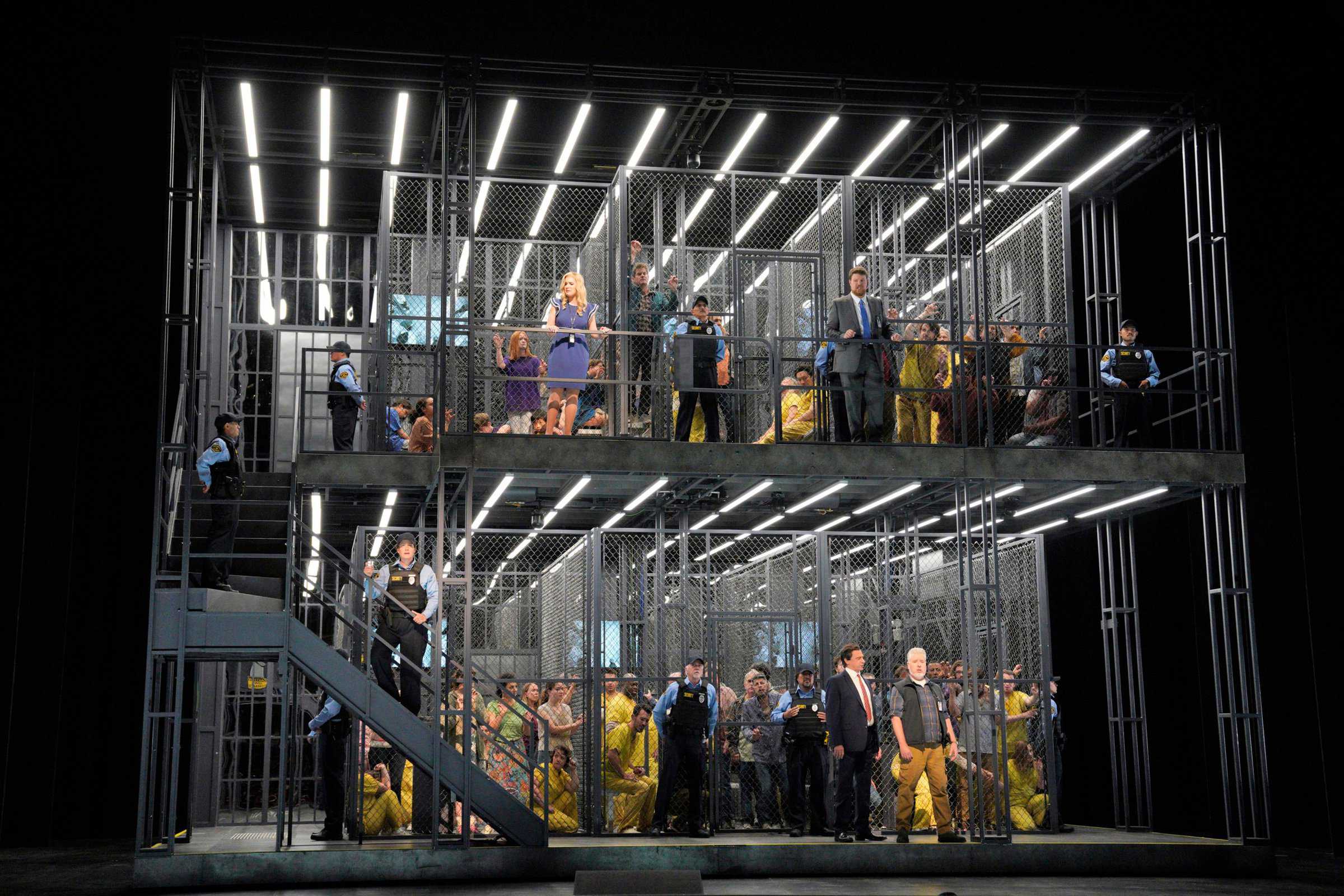
The most poignant scene — for us anyway — was the final act. So many operas end with the death of your favorite character or one of the main leads, whereas in Fidelio’s final scene, a woman becomes the hero. Not only does her Florestan live but they are united once again and in the process, the other prisoners are freed as well. The chorus performance at the end is incredibly moving, echoing joy, gratitude and happiness as the overtone while also providing hope for those who have lost it. What’s even more empowering, is that the joy comes as a result of a woman heroine, which is a bit shocking for its time in history. Bravo!

Elza van den Heever as Leonore and Russell Thomas as Florestan in Beethoven’s “Fidelio.” Photo: Cory Weaver/San Francisco Opera
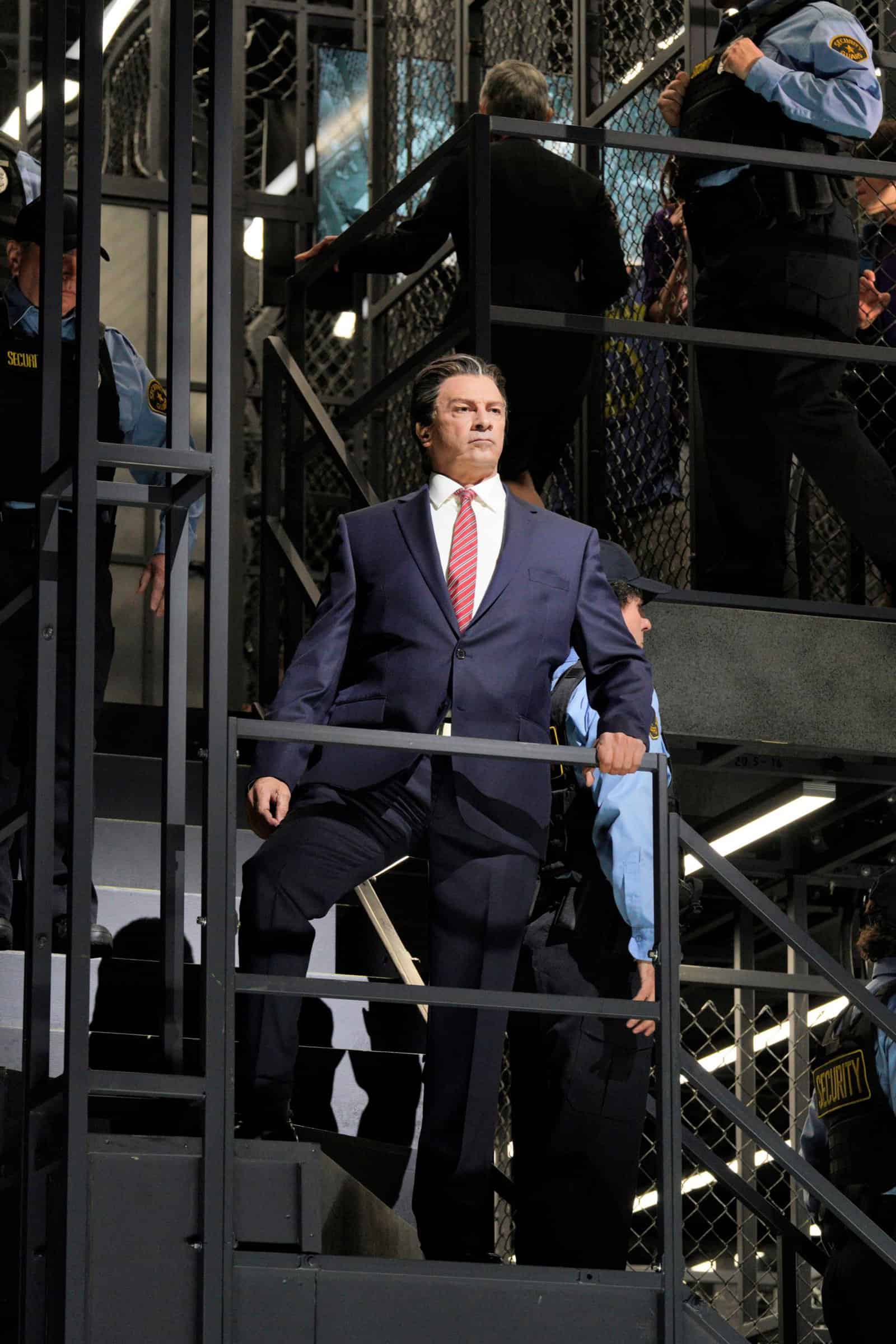
Greer Grimsley as Don Pizarro in Beethoven’s “Fidelio.” Photo: Cory Weaver/San Francisco Opera
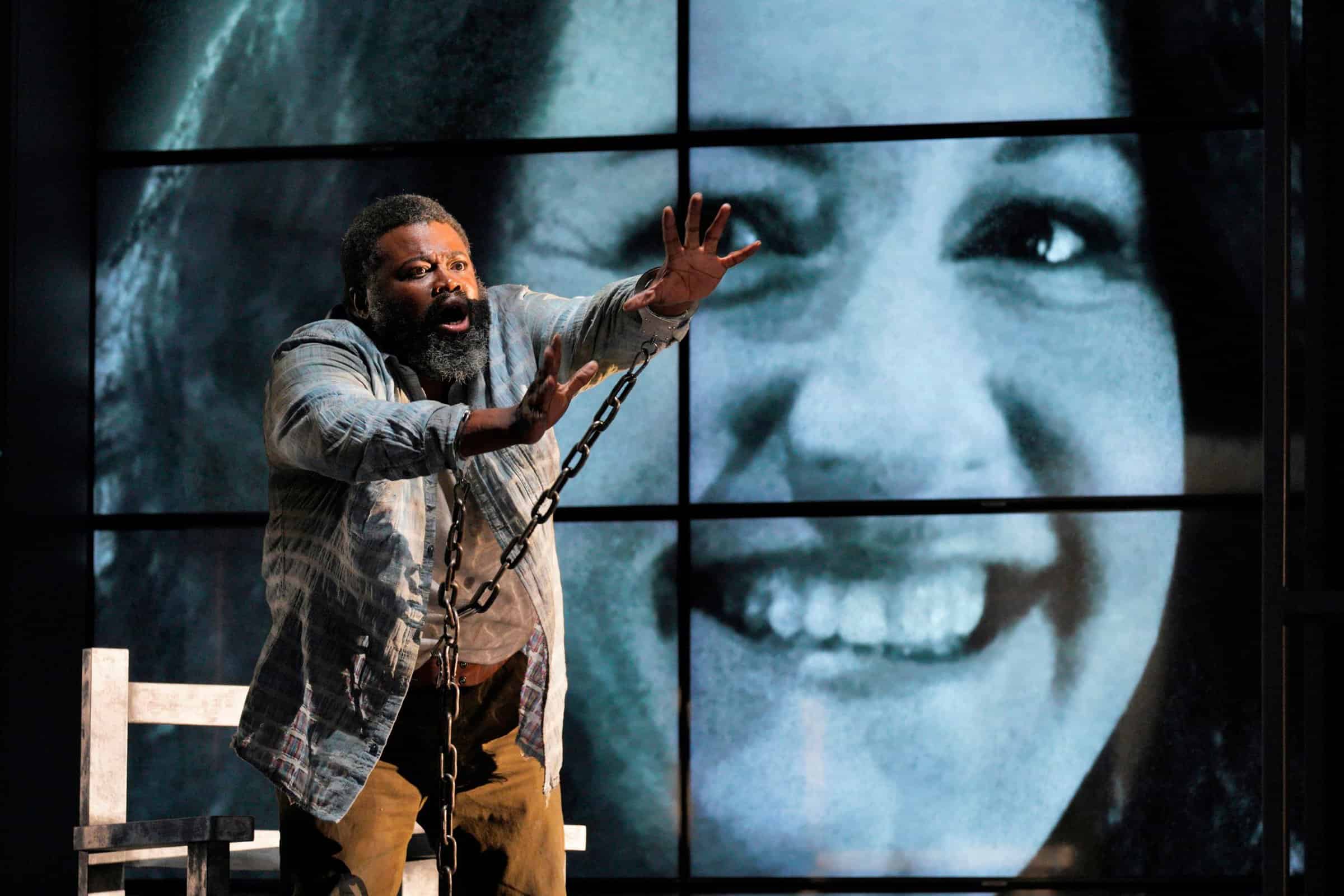
Russell Thomas as Florestan in Beethoven’s “Fidelio.” Photo: Cory Weaver/San Francisco Opera. He feels/senses/hears angels coming to him during a time of fright and despair.
We’re huge fans of the intoxicating creations that stemmed from old world Europe and this opera (and its location) is a great example of the magic from this era. The original setting for Fidelio was 18th Century Spain, near Seville and the SF Opera’s latest version of it brings it into the modern world. Act I takes place in the courtyard of a State Prison whereas Act II begins deep in a subterranean dungeon with the final scene being set on the castle’s parade grounds.
I love the way San Francisco Opera General Director Matthew Shilvock described their intentions for Fidelio.
“It is vitally important to me that the work on our stage reflects our community; that we embrace the storytelling power of this space to better understand the world. When we invited Matthew Ozawa to create a new Fidelio production, it was very much with that aspiration. How could this piece, over 200 years old, teach us truths not just about humanity but about humanity now? As we emerge from this time of darkness and silence in the world, that is a particularly urgent need.”
— Matthew Shilvock, San Francisco Opera General Director
When you consider that Beethoven composed Fidelio in the tailwinds of the French (and American) Revolution, the opera reflects a time when humanity had to deal with the hierarchical oppression and conflict between church and state with all of its challenging vices. Shilvock adds, ” Fidelio has been an anthem to freedom from oppression and isolation for over two centuries. It uplifts with an extraordinary hopefulness that is so fitting in this moment.”
A L’il History
Director of the Theater an der Wien Emanuel Schikaneder persuaded Ludwig van Beethoven to write his first opera in 1803. Twelve years earlier, Schikaneder had supplied Mozart with the libretto to The Magic Flute and created the role of Papageno. By then, Beethoven had already composed his Op. 18 string quartets, his first three piano concerti, numerus piano sonatas, including the Moonlight and Waldstein sonatas and was working on his third symphony. He was well underway but as we have learned from history, that doesn’t always translate to automatic success — look at poor Vincent Van Gogh and so many artistic and musical greats from later that same century.
While composing the opera between 1804 and 1805, Beethoven was said to have had a love affair with the widow Josephine von Brunsvik, which one could argue is seen reflected in Fidelio with Leonore’s bold moves to save Florestan from death.
“The libretto spoke to Beethoven’s own idealized view of women, and its larger themes of the defeat of political tyranny and the triumph of good over evil resonated with Beethoven’s passionate belief in the ideals of the Enlightenment.”
As fate would have it, Fidelio was apparently a bit of a flop at its premiere on November 20, 1805 but let’s remember this time in history as well. Napoleon’s troops had occupied Vienna and the Empress and most of Beethoven’s friends and supporters had already fled the city, which meant that the audience was overpowered by French officers. Timing is everything, isn’t it? After three performances, sadly the opera was withdrawn. But history brought Fidelio back in 1814 when Vienna’s Kärntnertor Theater revived it after he made countless changes, which included rewriting finales for both acts, adding a new recitative for Leonore’s aria, adding a final section to Florestan’s aria, and cutting some of the weaker numbers.
The Fidelio we all witnessed at the San Francisco Opera in October was based on what is seen as Beethoven’s final version of the now infamous “international operatic repertoire.”
As the San Francisco Opera itself notes in their history of this opera, “during Beethoven’s life, German opera was moving from the comic singspiel, in which musical numbers were separated by dialogue, toward a model that would eventually become dominated by Wagner’s through-composed works. Beethoven’s Fidelio shares the form—musical numbers separated by spoken dialogue—but is more overtly serious than Mozart’s Flute. The music Beethoven composed for his opera is on an exalted level, at times foreshadowing his monumental Ninth Symphony. But at the same time it reflects the very distinct personalities of his characters, some of whom are far from heroic. The folksy nature of Marzelline and Jaquino and the evolving character of Rocco all are conveyed in their music.”
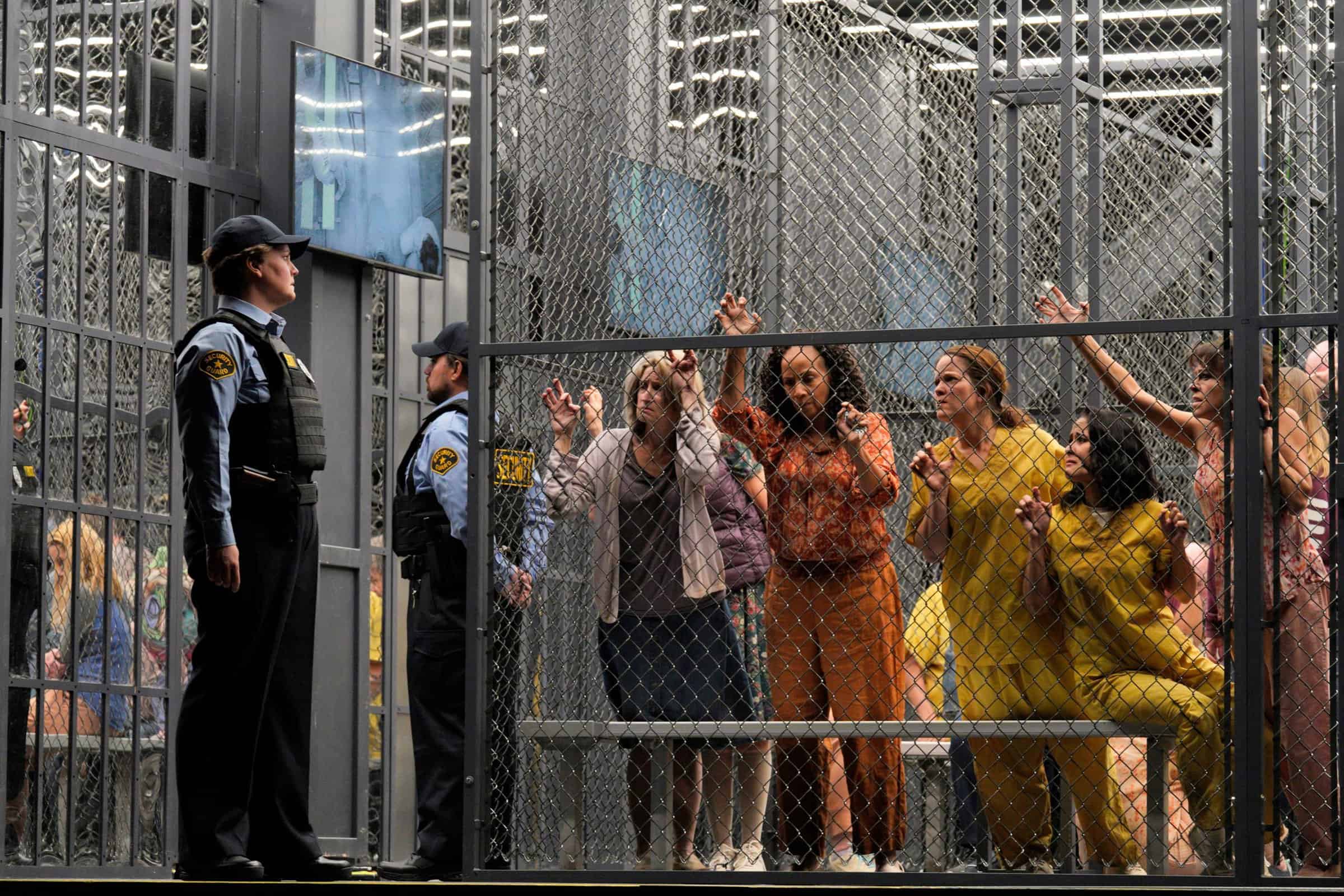
Elza van den Heever as Leonore with members of the San Francisco Opera Chorus in Beethoven’s “Fidelio.” Photo: Cory Weaver/San Francisco Opera
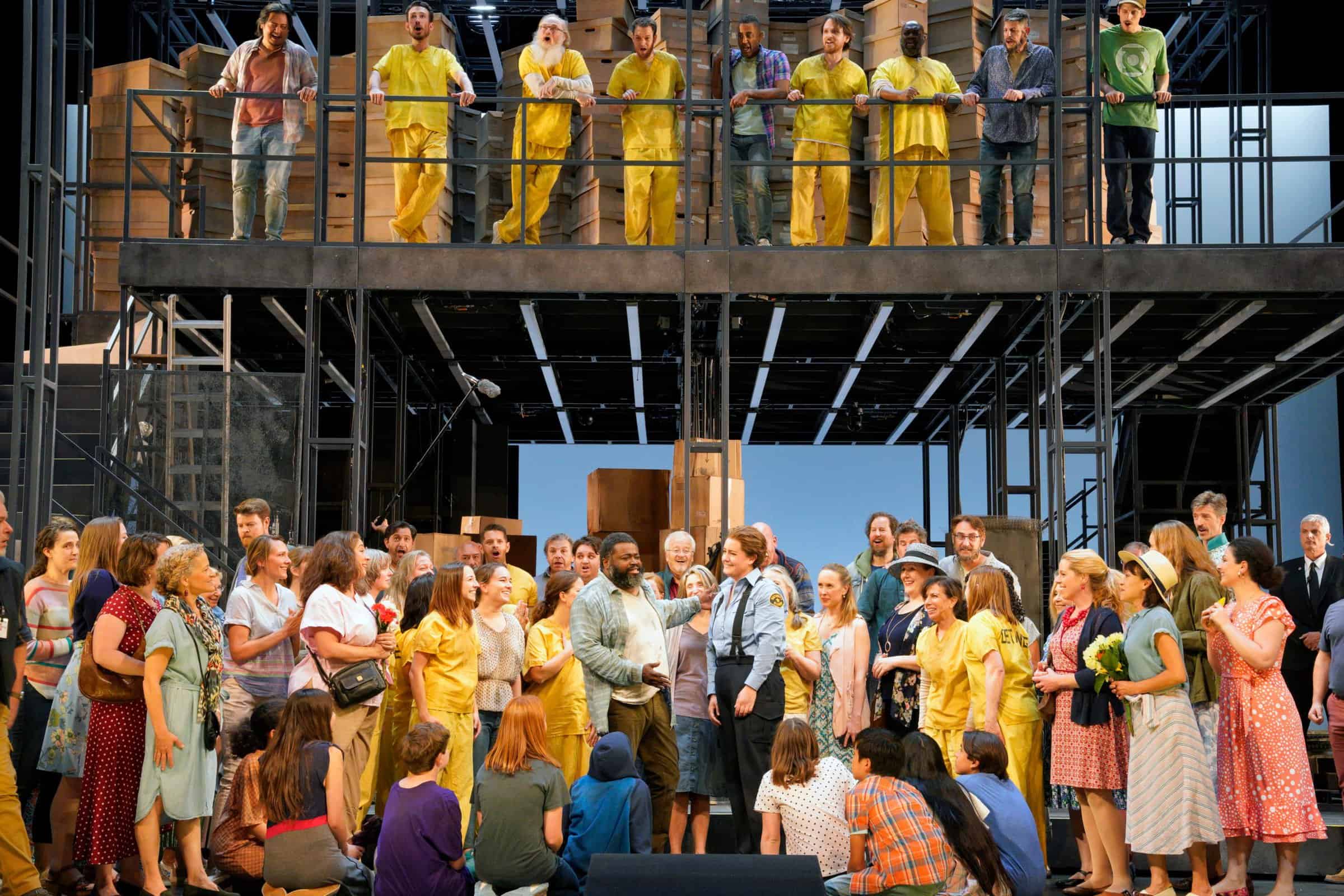
Russell Thomas as Florestan and Elza van den Heever as Leonore with the San Francisco Opera Chorus in the background. Beethoven’s “Fidelio.” Photo: Cory Weaver/San Francisco Opera
As the Fidelio director Matthew Ozawa so poignantly remarked, “Fidelio has consistently served as a symbol of hope for generations of people afflicted by oppression: a revival in 1814 served as a protest against Napoleon’s autocratic tyranny; an Arturo Toscanini led performance in 1937, as well as a Bruno Walter conducted Metropolitan Opera performance in 1941, affirmed the dignity of humanity and the countless victims escaping Europe’s Nazi terror; performances of Fidelio in 1954 following the death of Stalin became a statement of outrage for those who were unjustly condemned to the regime’s prisons. Each performance reaffirmed and celebrated the power of humanity to defeat tyranny and overcome oppression. The questions we now ask ourselves are: Who is afflicted by oppression in the USA and globally? What does shining a light on injustice look like? How is true freedom achieved?”
Hear hear Matthew — well said!
Fidelio in San Francisco Opera History
The San Francisco Opera first presented Fidelio in 1937 with Kirsten Flagstad heading the cast, Belgian tenor Réne Maison as her Florestan, Ludwig Hofmann was Pizzaro, Emanuel List, Rocco, and the conductor was the legendary Fritz Reiner. Two years later Fidelio returned and since then, San Francisco audiences have often enjoyed such high-powered pairings as Astrid Varnay and Set Svanholm (1951), Birgit Nilsson and Jon Vickers (1964), Gwyneth Jones and James King (1969) Elizabeth Connell and James McCracken (1987), Christine Brewer and Thomas Moser (2005).
How did this performance compare to previous performances around the world? The first performance of Fidelio was a three-act version in Vienna at the Theater auf den Wieden (later, an der Wien) on November 20, 1805, and the second version was also in Vienna at the same theater on March 29, 1806. The third and final version was performed in Vienna at the Kärntnertortheater on May 23, 1814.
In the states, the first performance was at Park Theatre in New York on September 9, 1839 with the first San Francisco Opera performance being held on November 8, 1937 as noted above.
Other Leonores over the years have included Inge Borkh, Gré Brouwenstijn and Hildegard Behrens. The opera has often attracted famous conductors as well, including 79-year-old Pierre Monteux who led Fidelio in 1954. Others have included Erich Leinsdorf and three company music directors: John Prichard, Donald Runnicles, and now the current director, a woman (yay), Eun Sun Kim.
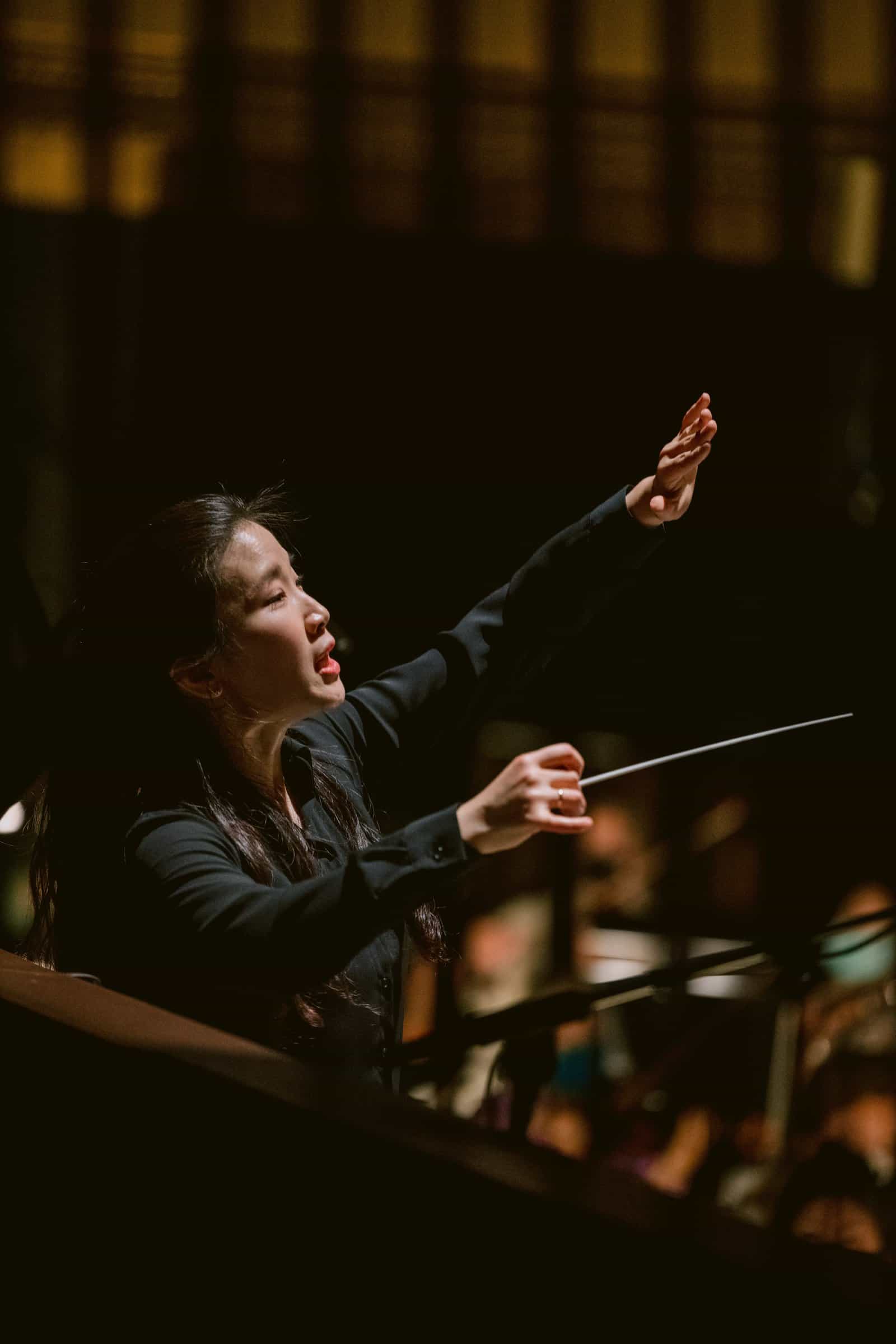
Eun Sun Kim, San Francisco Opera Music. Photo: Kristen Loken/San Francisco Opera
The Details
The performance of Fidelio at the San Francisco Opera ran for a total of around two hours and 26 minutes with one 25 minute intermission. The opera was performed in German with German dialogue (shortened, adapted) and with no cuts to the score.
Overtures: In the previous century, it was customary to interpolate Beethoven’s Leonore No. 3 Overture between the two scenes of the second act. Gustav Mahler is generally credited with instituting this practice which San Francisco Opera adopted for two presentations in previous seasons. The new production opened with the Fidelio overture and the Leonore No. 3 was not performed.
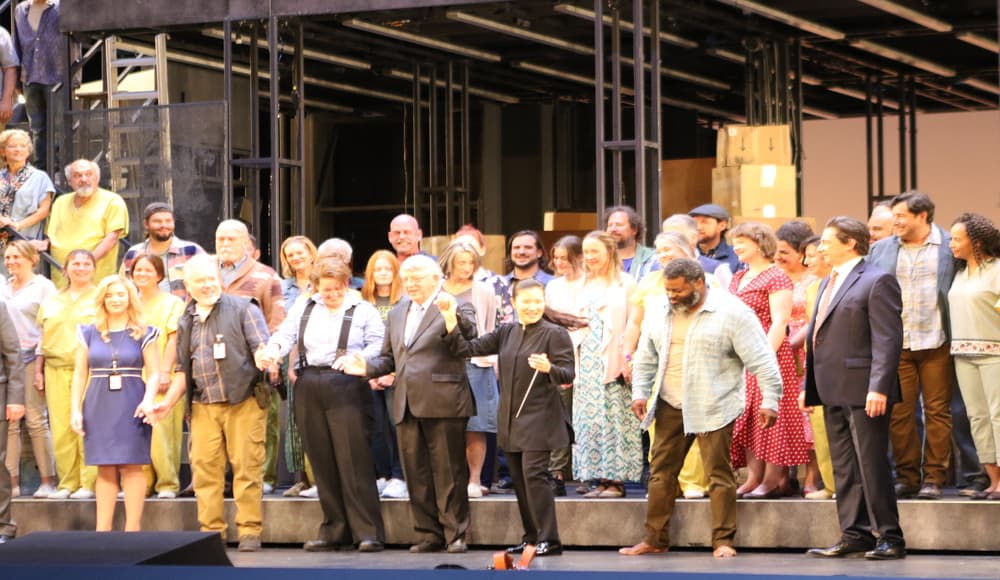
The entire cast with Eun Sun Kim in the middle at the end of the October 17 performance.
Eun Sun Kim (above) conducted Fidelio for the first time with this production and four San Francisco Opera Adler Fellows—soprano Anne-Marie MacIntosh, tenor Zhengyi Bai, tenor Christopher Oglesby, bass Stefan Egerstrom—also made role debuts in this production while MacIntosh made her Company first appearance as Marzelline.
Below, a few deserved bows at the end.
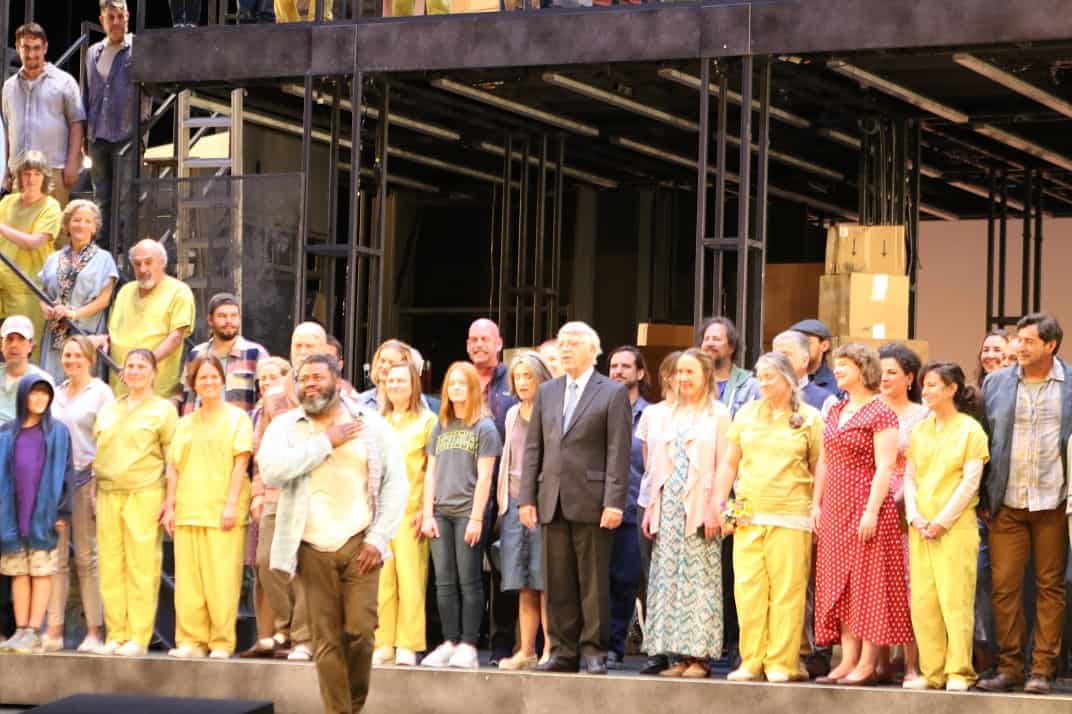
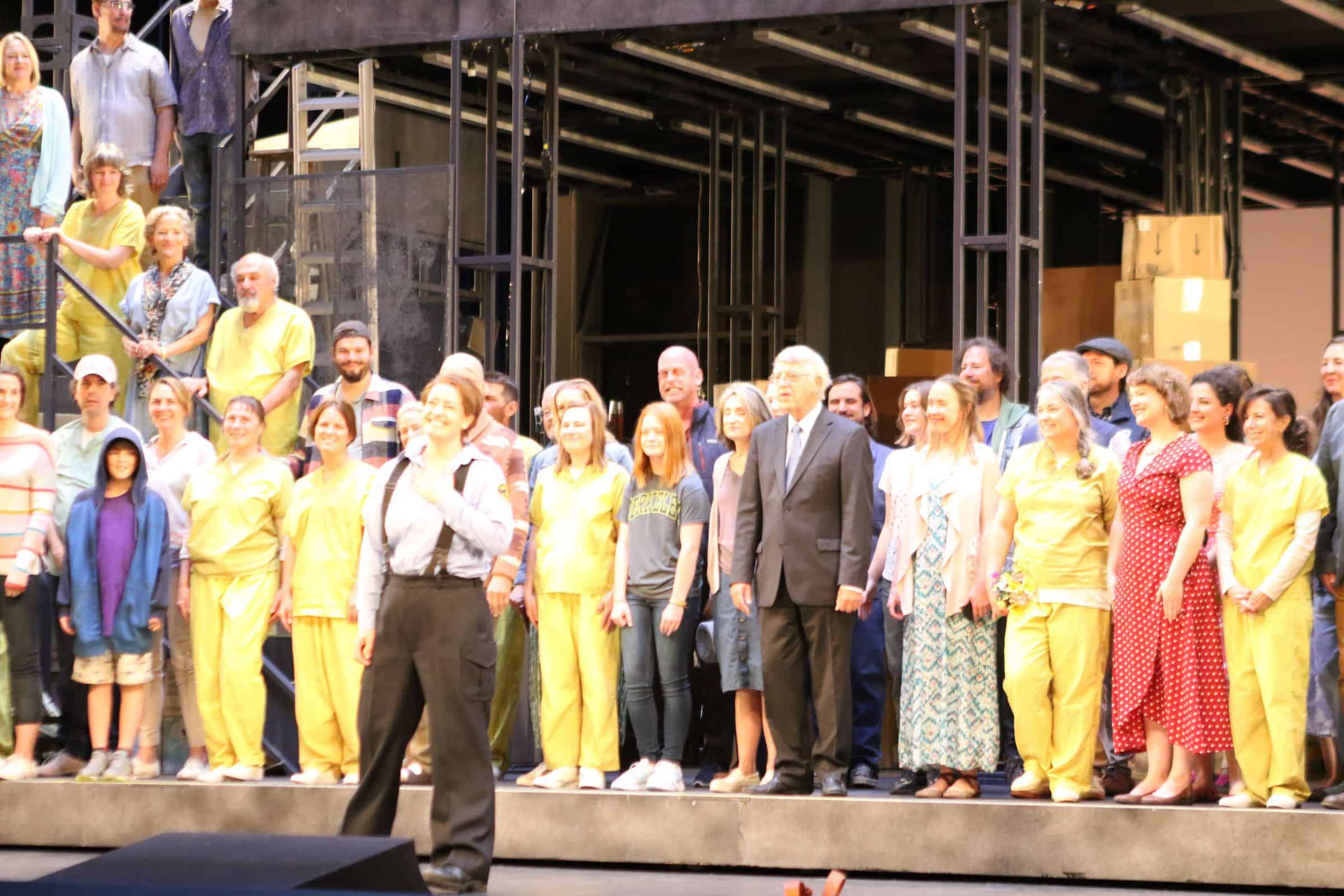

The Matthew Ozawa production and Company debut of Fidelio were apparently originally planned to coincide with the global celebrations of the 250th anniversary of the composer’s birth in 2020, but was delayed by the pandemic. This season’s opening of Fidelio marks the premiere of the original project that brought together the creative team of Ozawa, Nichols, costume designer Jessica Jahn, and co-lighting designers JAX Messenger and Justin A. Partier for the San Francisco Opera.
As for the ambiance, it’s always amazing at San Francisco’s War Memorial Opera House and on this beautiful fall day, it was no different. For those who wonder whether they can enjoy the full effect of an opera with a mask on, think again. It did not impact our experience at all.
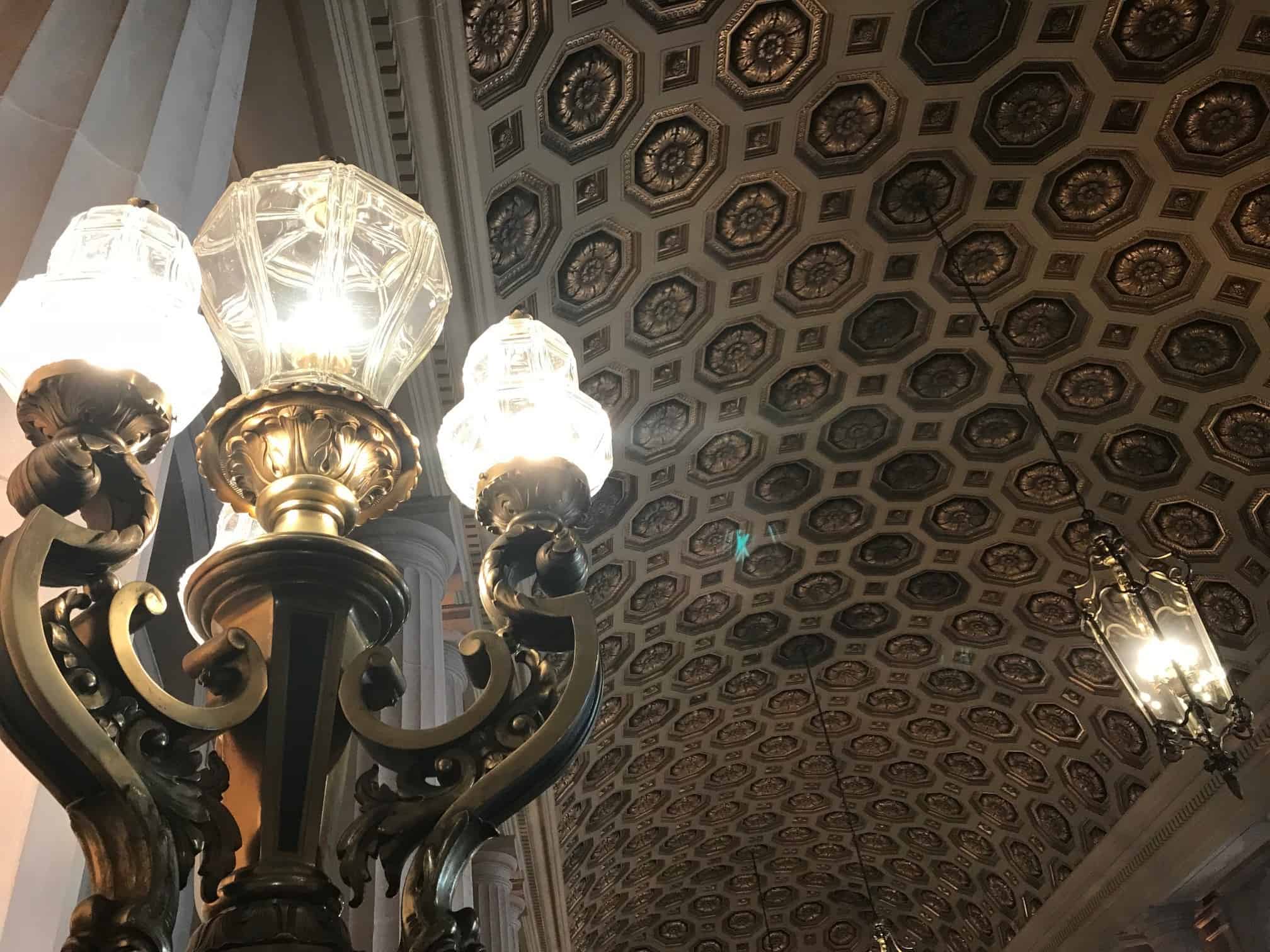
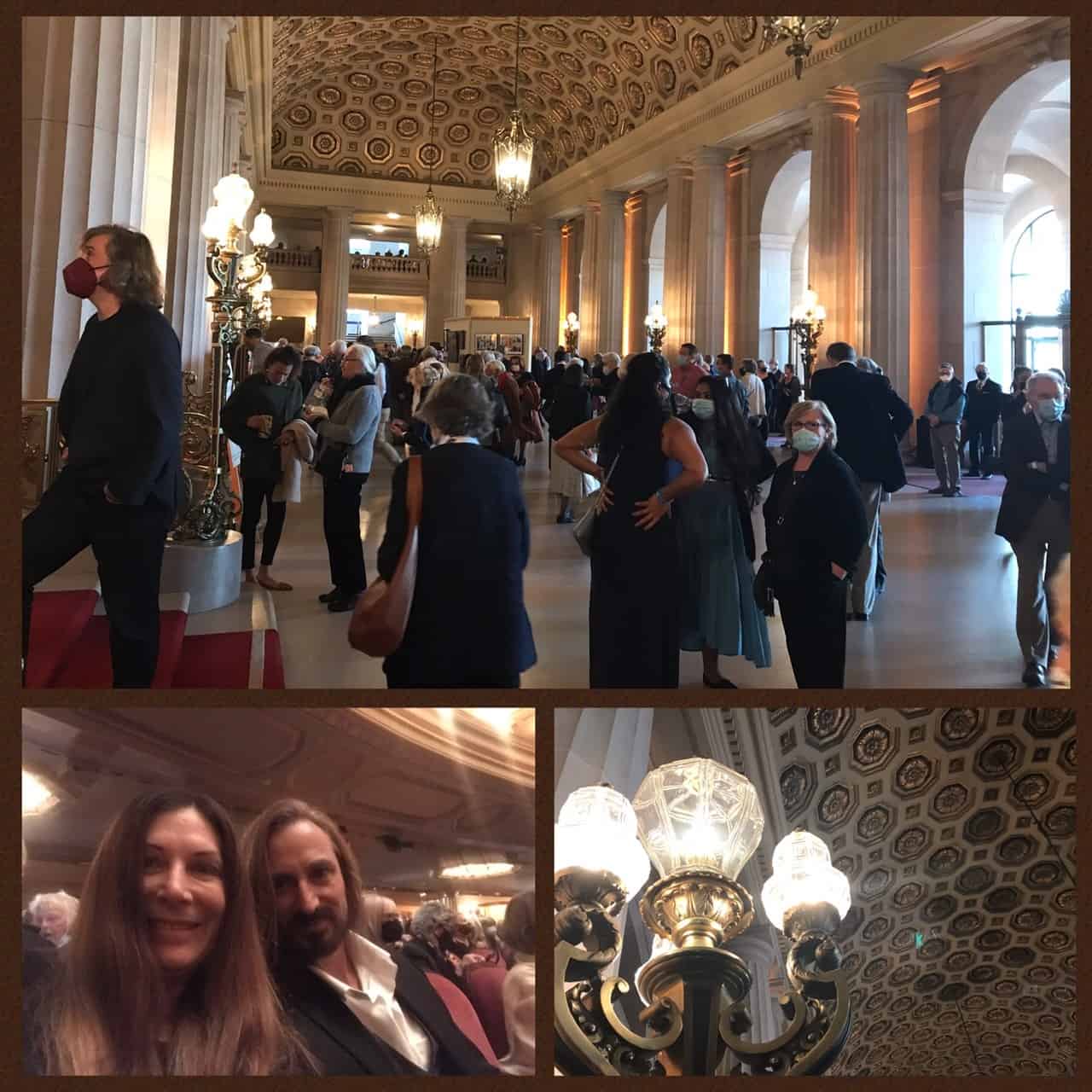


We’re excited that opera is back in the City-by-the-Bay and were pleasantly surprised at how full the house was despite masks and vaccination cards at the door. Simply put, the arts cannot be stopped by a pandemic for there’s far too many opera and music lovers in the SF Bay Area and beyond. Hats off to those who made it happen and continue to make it happen.
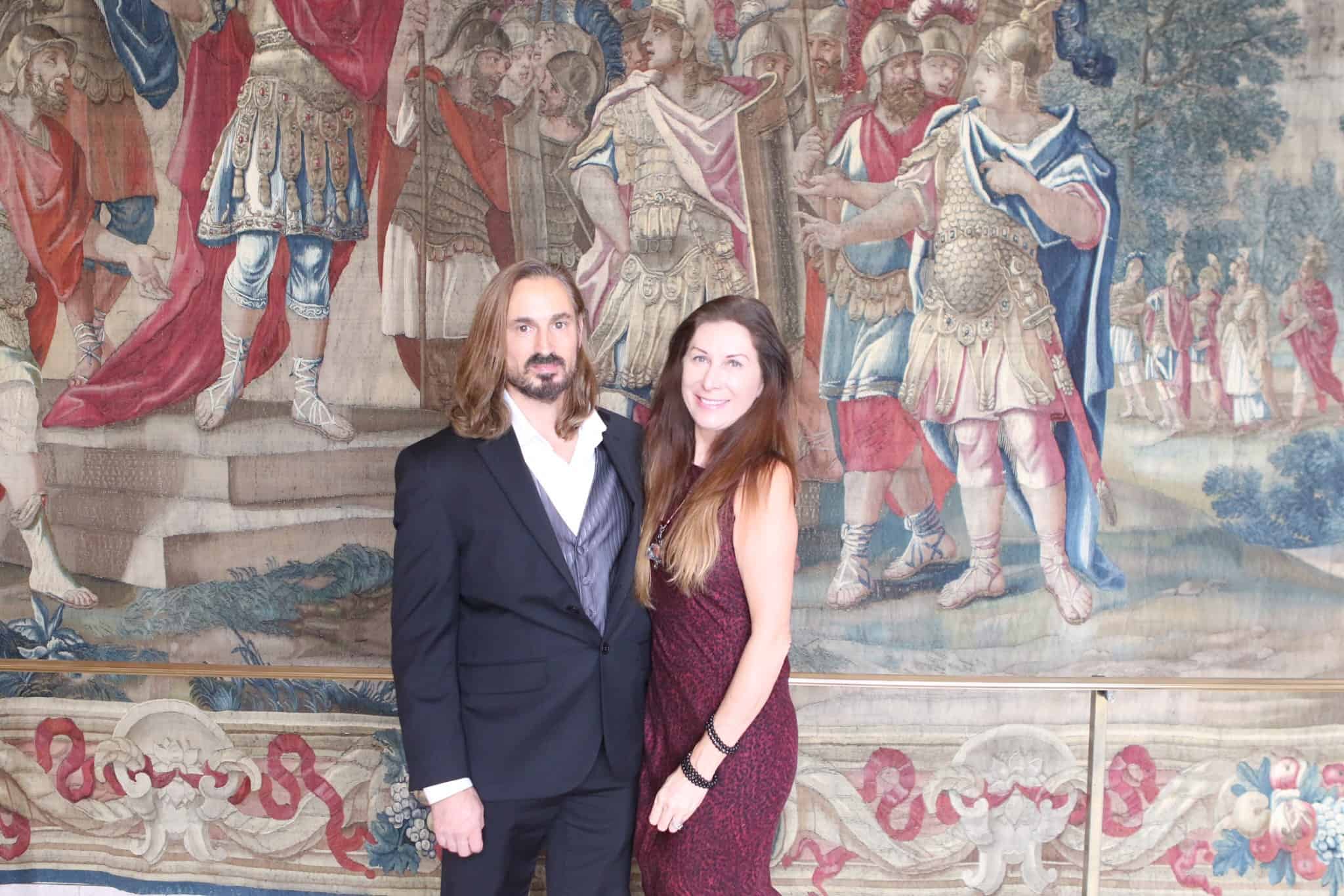

Renee Blodgett is the founder of We Blog the World. The site combines the magic of an online culture and travel magazine with a global blog network and has contributors from every continent in the world. Having lived in 10 countries and explored over 90, she is an avid traveler, and a lover, observer and participant in cultural diversity. She is also the founder of the Magdalene Collection, a jewelry line dedicated to women’s unsung voices and stories, and the award-winning author of the bestselling book Magdalene’s Journey
She is founder of Blue Soul Media and co-founder of Blue Soul Earth as well as the producer and host of the award-winning Blue Soul CHATS podcast, that bridges science, technology and spirituality. Renee also founded Magic Sauce Media, a new media services consultancy focused on viral marketing, social media, branding, events and PR. For over 20 years, she has helped companies from 12 countries get traction in the market. Known for her global and organic approach to product and corporate launches, Renee practices what she pitches and as an active user of social media, she helps clients navigate digital waters from around the world. Renee has been blogging for over 16 years and regularly writes on her personal blog Down the Avenue, Huffington Post, BlogHer, We Blog the World and other sites. She was ranked #12 Social Media Influencer by Forbes Magazine and is listed as a new media influencer and game changer on various sites and books on the new media revolution. In 2013, she was listed as the 6th most influential woman in social media by Forbes Magazine on a Top 20 List.
Her passion for art, storytelling and photography led to the launch of Magic Sauce Photography, which is a visual extension of her writing, the result of which has led to producing six photo books: Galapagos Islands, London, South Africa, Rome, Urbanization and Ecuador.
Renee is also the co-founder of Traveling Geeks, an initiative that brings entrepreneurs, thought leaders, bloggers, creators, curators and influencers to other countries to share and learn from peers, governments, corporations, and the general public in order to educate, share, evaluate, and promote innovative technologies.








